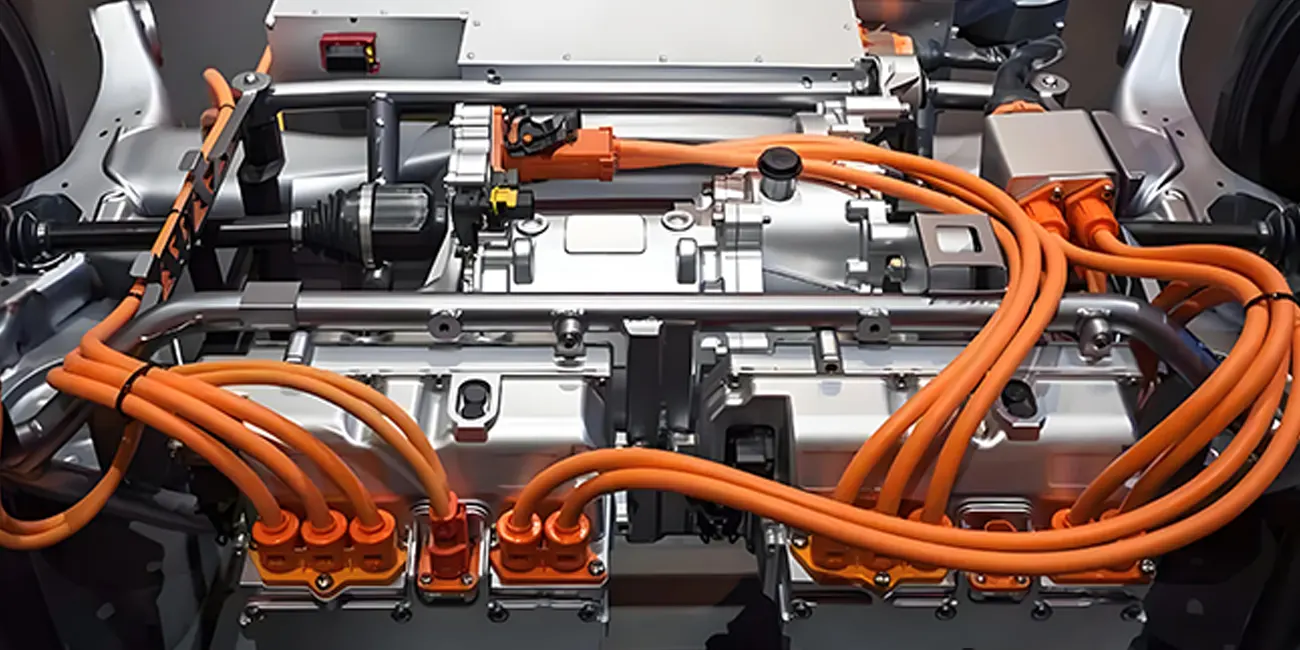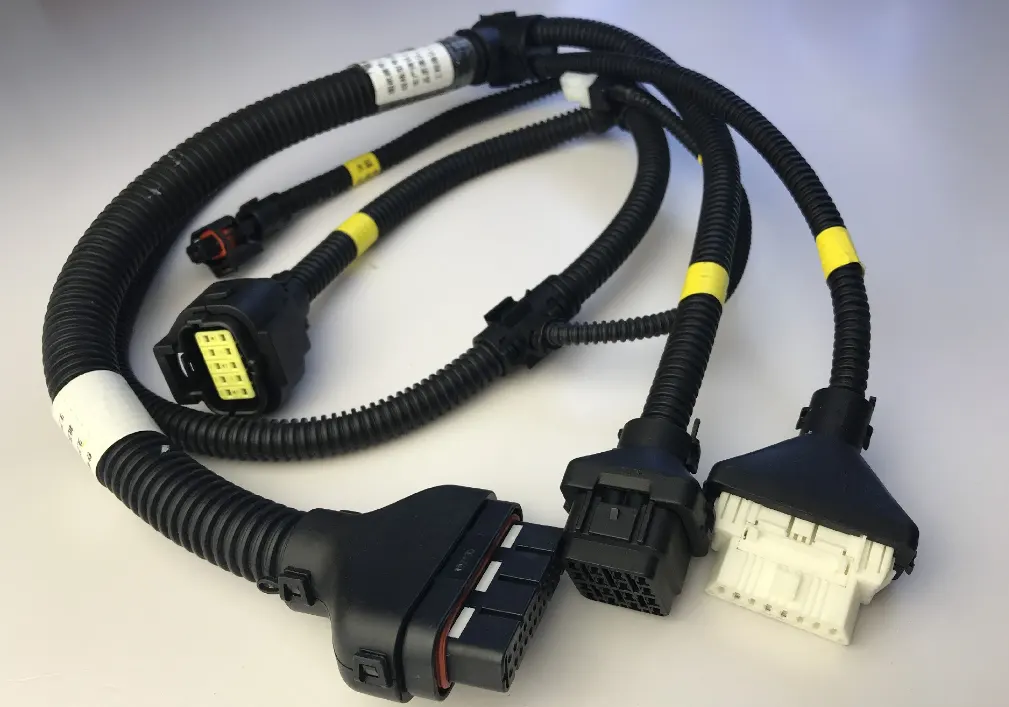
By quanyu lee
2024-12-13 06:02:07
new generation of engine wiring harnesses
The new generation engine wiring harness is the core component of the automotive electrical system, responsible for connecting the engine control unit (ECU) with components such as sensors and actuators, transmitting power and control signals, and ensuring efficient operation of the power system. Compared to traditional wiring harnesses, it adapts to the needs of new energy and intelligent vehicles through material upgrades, structural optimization, and intelligent design, achieving a comprehensive improvement in performance and reliability.

High voltage and high speed
- High voltage adaptation: In order to match the power system of new energy vehicles, the new generation wiring harness needs to carry a high voltage of 600V or above, and the material withstand voltage level has been raised to 3000V or above.
- Data transmission upgrade: using new types of cables such as high-frequency coaxial cables, supporting 5G/Ethernet communication protocols, to meet the high-speed data transmission needs of autonomous driving, intelligent cockpit, and other applications.
Material and process innovation
- High temperature resistant materials: use cross-linked polyolefin, silicone rubber and other high-temperature resistant (-40 ℃~200 ℃) insulation materials to enhance the adaptability of the cabin environment.
- Lightweight design: Aluminum wires replace some copper materials, combined with thin-walled insulation technology to achieve a weight reduction of over 30% while maintaining conductivity.
- Modular production: By using 3D wiring technology and laser welding technology, the integration of wire harness assemblies can be improved by 20% -40%, reducing the failure rate.
New energy adaptability
- Special interface development: Design a sealed connector with a waterproof rating of IP6K9K for electric drive systems, suitable for special installation positions such as battery packs and motors.
- Electromagnetic shielding enhancement: The multi-layer shielding structure (aluminum foil+braided layer) increases the electromagnetic interference suppression ability by 50%, ensuring the stability of the high-voltage system.

Comparison between the new generation engine wiring harness and the old model
Comparing dimensions |
New generation engine wiring harness |
Old engine wiring harness |
Core upgrade point |
| Voltage level | Supports high voltage systems above 600V, with insulation materials capable of withstanding voltage levels of 3000V or higher | Only compatible with traditional fuel vehicles' low-pressure systems (usually ≤ 48V) | Adapt to the high-voltage requirements of new energy vehicles, enhance safety and stability |
| Materials and processes | Aluminum wire+thin-walled insulation technology reduces weight by 30%; High temperature resistant material (-40 ℃~200 ℃) | Mainly made of copper wire, with a relatively high weight; Ordinary PVC insulation material (temperature resistance ≤ 125 ℃) | Lightweight and improved ability to withstand extreme temperatures, suitable for complex operating conditions of new energy vehicles |
| Maintenance cycle | Anti oxidation life up to 8 years, maintenance cycle extended to 80000 kilometers | The maintenance cycle is relatively short (about 40000 kilometers), which is prone to poor contact due to aging | Reduce maintenance frequency and cost |
| Total length of wiring harness | Single bike wiring harness reduced to within 1000 meters (such as Tesla 4680 battery system) | The length of traditional fuel vehicle wiring harness is about 1.5-2 kilometers | Modular design reduces complexity and improves installation efficiency |
| Cost proportion | The proportion of wiring harness cost for new energy vehicle models has decreased by about 15% | The cost of fuel powered vehicle wiring harness accounts for a higher proportion (about 2000-2500 yuan) | Large scale production and material optimization to reduce costs |
Application Fields of New Generation Engine Wiring Harness
1、 Traditional fuel vehicle field
Engine control module connection
Connect the engine's sensors (such as crankshaft position sensor, camshaft position sensor) and actuators (fuel injectors, ignition coils) to ensure precise control of functions such as fuel injection and ignition timing.
Support the power transmission and signal interaction of key equipment such as generators and starters, ensuring the stability of engine start-up and operation.
Power system integration
Integrate complex circuits up to 5-8 meters in the engine compartment, optimize layout to reduce electromagnetic interference and improve reliability.

2、 In the field of new energy vehicle models
High voltage system adaptation
Provide high-voltage connections above 600V for electric vehicle high-voltage battery packs, drive motors, and electronic control systems to meet high current transmission requirements.
Adopting IP6K9K waterproof sealed connectors and multi-layer shielding structure to ensure the stability of high-voltage components in humid and vibrating environments.
Intelligent driving and electronic control support
Integrated CAN bus or Ethernet protocol, supporting real-time data transmission between autonomous driving sensors (radar, camera) and domain controllers.
Provide precise signal transmission and control interfaces for energy recovery systems and thermal management systems.

Typical application cases
Fuel powered vehicles: Optimize the traditional engine compartment wiring harness layout, reduce failure rates, and improve electromagnetic compatibility.
New energy vehicles: In models such as Tesla 4680 battery system and BYD e-platform 3.0, the high-voltage wiring harness achieves lightweight and high protection level.



